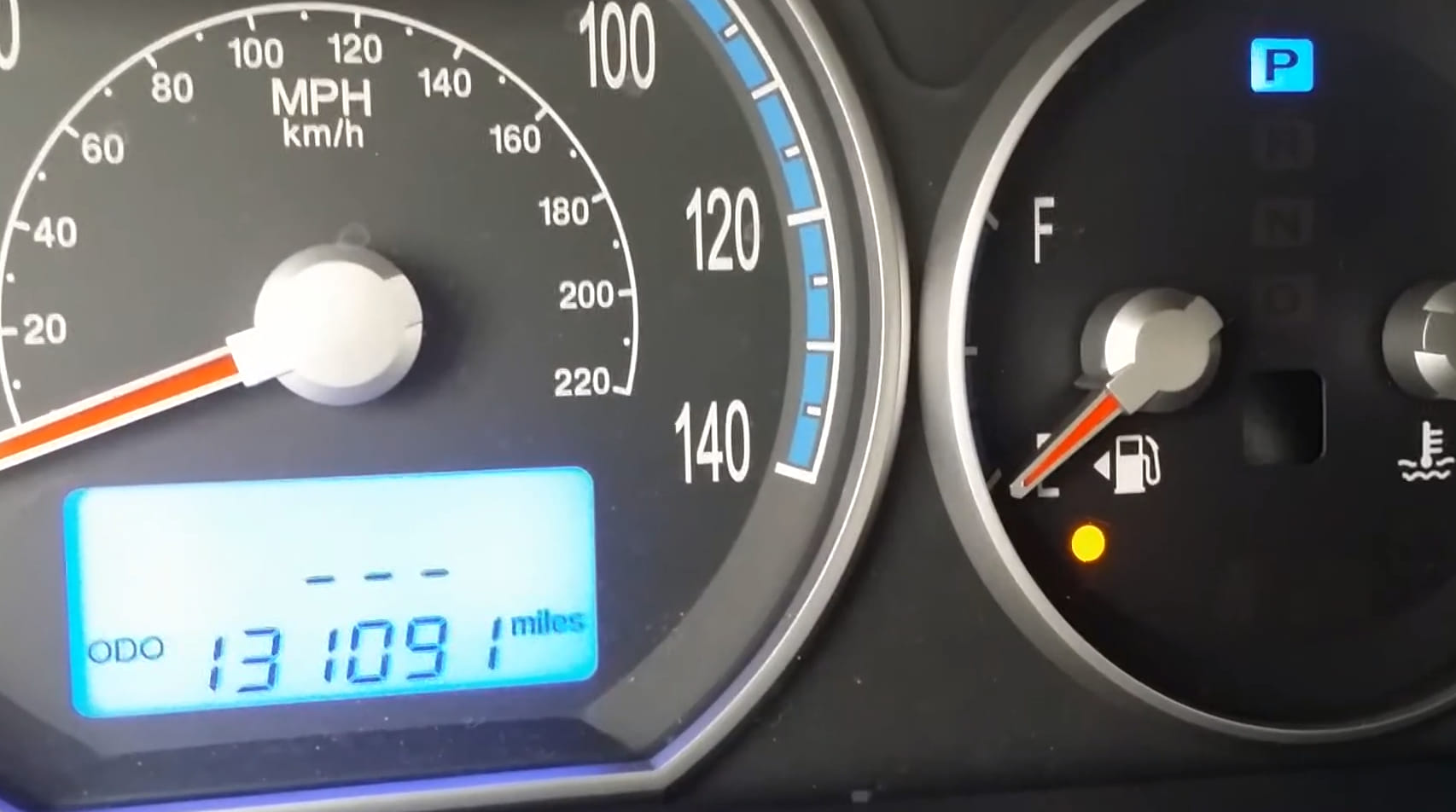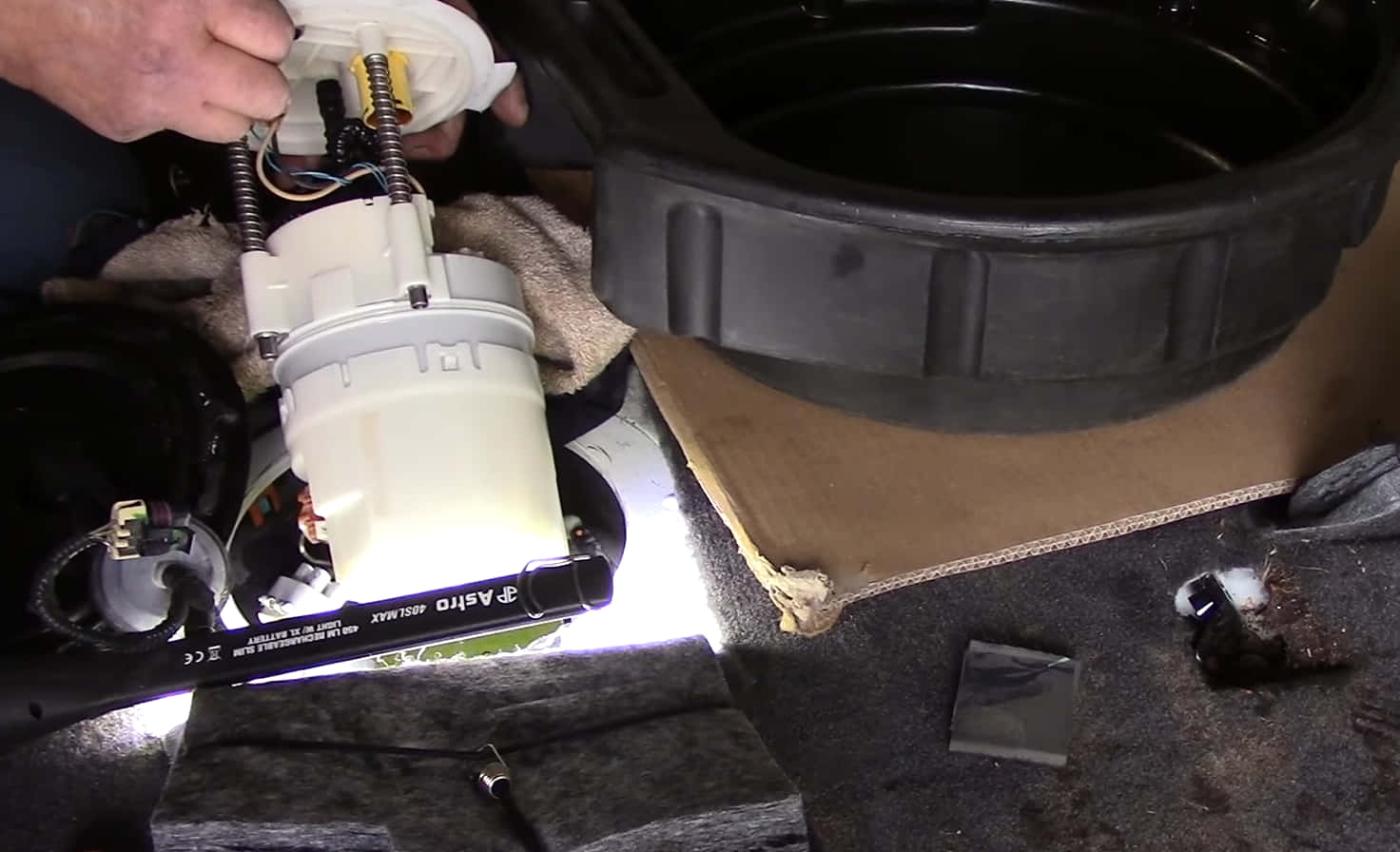There are quite a few folks out there wondering about the common Hyundai Santa Fe gas gauge problems.
You may be one of those who are experiencing these issues right now. And for some, they simply want to be prepared for what to expect.
So, what exactly are the causes of these problems and how bad are these to impact your safety while on the road? Let’s investigate this topic further and keep reading to learn more!

Contents
Hyundai Santa Fe Gas Gauge Problems
A gas gauge issue is most commonly caused by a faulty fuel sending unit. This is why the fuel gauge is unable to read correctly.
This fuel sending unit measures how much fuel is in the tank and then sends information on the fuel level to your vehicle’s fuel gauge, which you see on the dashboard. This helps you to be aware of the fuel level you currently have and alerts you when your fuel runs low.
However, if the fuel sending unit is faulty, then the gauge is not going to give you accurate information on the fuel level. This is why you are left unaware of whether it is time to refill the fuel or not.
Understanding The Deeper Cause Of The Problem

The fuel sending unit is in the gas tank. It measures the level of fuel in the tank. Some may be hooked up to your fuel pump assembly, and there are also stand-alone units. No matter what the design, they may come with a variable resistor, metal arm/rod, and a float. They all work to measure the fuel level and send the information to your gas gauge.
The float is a buoyant component that moves up or down depending on the fuel level. Then the metal rod or arm pivots based on how the float moves. The wiper in the variable resistor moves as the rest of the components move. Overall, the wiper is the one responsible for sending electric current to your fuel gauge that will then display the fuel level on your dashboard.
When your fuel tank is full, you will find the wiper closer or further from the ground on your resistive component strip. But when the fuel is running low, the wiper is also close or far from the ground because the float rests at the metal rod’s bottom. Then, the gauge will show either empty or full depending on what the resistance reads.
Why Your Gas Gauge Is Not Working

Sometimes, a bad fuel sending unit will not perform similarly when broken. This is why you may want to check for these signs that the fuel sending unit is faulty, so you can be alerted of any issue with your gas gauge, as well.
1. Gas gauge stuck on full
When you see that the gauge reads full all the time, then the fuel gauge resistor that sends the full voltage to your gauge is faulty. As time goes by, this leads to a wear to the resistive material strip. Then, an open circuit may occur.ư
2. Fuel gauge reads empty
If you notice that the gauge is always reading empty even after refilling the fuel tank, then it can be due to a bad resistor. Wires that have corroded can also prevent voltage from the fuel gauge or the source.
3. Fluctuation between full and empty
If you notice that the reading keeps on fluctuating between full and empty, then it is a mechanical failure that needs to be addressed. The float tends to stick at a specific level and then fall back into the right place naturally or as the vehicle moves.
Read More: Hyundai Santa Fe Panoramic Sunroof Problems
Problems And Fixes To Consider
Overall, when your gas gauge is not functioning as it should, your vehicle will be virtually undrivable since you are not aware of whether your gas is full or empty. Running out of gas hurts your vehicle, so the pump runs the risk of overheating and leading to damage.
Moreover, when the fuel level is low, some debris from the tank may surface and clog the strainer and cause a buildup on the fuel injectors and fuel lines. This puts other expensive components and the engine itself into jeopardy.
If you notice these issues with your gas gauge, you need to have some test conduction to make sure the issue is indeed with the fuel sending unit. In some cases, the fix can be basic as replacing the instrument cluster fuse but others can be more invasive than this.
Conclusion
A gas gauge issue with your vehicle can be worrisome and may result in further damage to the engine and other critical components. This is why it is best to have the issue addressed at the onset of the problem to avoid inconveniences and steeper repair costs.